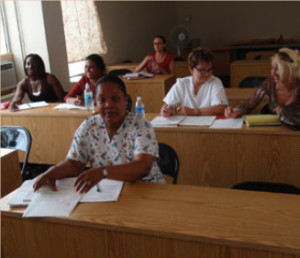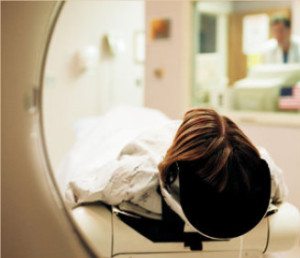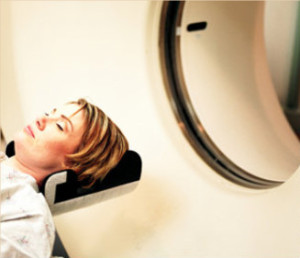CT Course Curriculum
46 Category “A” Credits
Session 1: Patient Care 
1-Medical terminology
2-Infection control
3-Commonly used drugs in the imaging suite
4-Informed Consent
5-Pre procedure lab tests
6-Order of imaging examinations
7-Brain Anatomy
8-Cranial Nerves
9-CSF pathways
Session 2: Radiation Safety
1-Types of radiation
2-Three stages of acute radiation syndrome
3-Units of measurement
4-Acceptable levels of radiation
5-Technologist factors for reducing radiation to the patient
6-Dose reduction techniques
Sessions 3 & 4: image Production-Physics and Instrumentation
1-The evolution of CT scanning technology
2-Computer hardware and software
3-Storage media
4-Data acquisition systems
5-X-ray production
6-Xray tubes, collimators
7-Detectors
8-Three methods of scanning
9-Image reconstruction
10-Pixels
11-Voxels
12-Image matrix
13-Linear attenuation coefficient
14-Hounsfield units
15-MAS and KVP
16-Z axis resolution
17-Slice thickness
18-Pitch
Session 5 & 6: Imaging Procedures
1-Brain
2-Head
3-Abdomen
4-Pelvis
5-Chest
6-Musculo Skeletal
7-Special procedures
8-CTA Brain
9-CTA of the heart
10-Image reconstruction (Multiplanar reconstruction)
- Surface rendering
- Volume rendering
- Shaded Surface Rendering
- MIP (Maximum Intensity Projection)
- Prospective vs. Retrospective images
Session 7: Course Review to Date
1-Midterm
- Patient Care
- Radiation Safety
- Image Production
- Imaging procedures
2-Questions and Answers
Session 8: Anatomy
1-Head
2-Neck
3-Chest
4-Pelvis
5-Arteries and veins
6-Extremities
7-Heart
Session 9: Artifacts

1-Aliasing
2-Nyquist theorem
3-Edge gradient
4-Metal artifacts
5-Motion
6-Beam hardening
7-Partial volume rendering
8-Ringn artifacts
Cone beam artifacts
10-Stair step artifacts
11-Tube arcs
1Session 10: General Reviews
1-Patient care
2-Radiation safety
3-Image production
4-Physics and instrumentation
5-Imaging procedures
6-Anatomy
7-Artifacts
Session 11: Final
- Image Reconstruction-50 questions-30 minutes
- Review-discussion of each question-30 minutes
- Artifacts-50 questions-30 minutes
- Review-discussion of each question-30 minutes
- CT Pathology-50 questions-30 minutes
- Review-discussion of each question-30 minutes
- Special CT procedures-50 questions-30 minutes
- Review-discussion of each question-30 minutes
Session 12: General Questions and Answer Review
Session 13: Total Course Review
A general discussion and review of the entire course work but with an emphasis on the actual functioning of the technologist in the CT suite to include radiation safety, artifacts and solutions to them, sedation in the suite, and the technologist’s interactions with physicians and nurses during procedures, general problem solving in the suite, contrast reactions, patient care in the suite.
